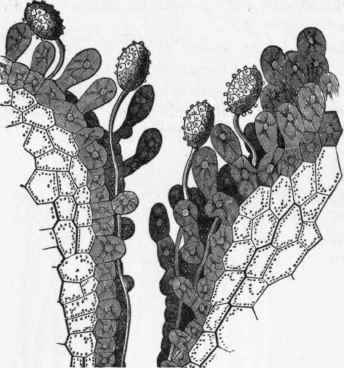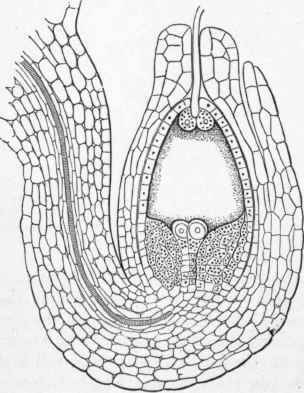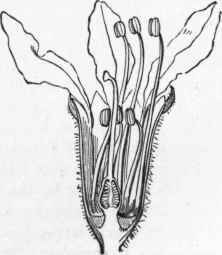Cross-Breeding And Hybridization
Description
This section is from the book "Commercial Gardening Vol1", by John Weathers (the Editor). Also available from Amazon: Commercial Gardening, A Practical & Scientific Treatise For Market Gardeners.
Cross-Breeding And Hybridization
When pollen is taken from the flower of one variety and placed on the stigma of another variety of the same species, and plants raised from the seeds so obtained, the process is rightly termed cross-breeding. Of the hundreds of varieties now in existence of the Sweet Pea, Carnation, and Chinese Primula, none of them are hybrids, although cultivators often speak loosely of hybridizing them. A hybrid can only be produced by taking pollen from the flower of one species and placing it on the stigma of another species, such as Cattleya labiata and C. bicolor, Pelargonium zonale and P. inquinans, Begonia boliviensis and B. Pearcei. Species belonging to different genera are sometimes hybridized, such as Cattleya labiata and Laeilia crispa, and the resulting seedlings named, Laeliocattleya or Catlaelia, by compounding the names. Three genera have been united by crossing the product of the first two with a third, namely, Brassavola, Cattleya, and Laelia, and indicated by the name BrassocatlaBlia.

Fig. 55. - Section of Style of Lilium Martagon, showing Pollen Grains on the Stigma, and sending down their Tubes along the conducting tissue of the Style.

Fig. 56. - Section of an Ovule, showing the entry of the Pollen Tube into the Embryo Sac.

Fig. 57. - Lythrum. Section of Flower, showing two rows of Stamens - one short, one long. The Style is short.
Hybrids are by no means always sterile, as was at one time supposed, when they were termed "mules". The hybrid progeny of Orchids, Begonias, Roses, and other plants may be used as parents for still further improving the race. To what extent hybridization can be carried is uncertain, as it largely depends on sexual affinity. Some varieties refuse to cross, and many species refuse to hybridize with one another. The difficulties are increased when it is attempted to mate species belonging to different genera, and the members of different natural orders refuse to hybridize at all. When species are distantly related, the possibilities of hybridizing them can only be determined by experiment. When this is done artificially it largely depends on the skill of the operator, who must get the pollen in mature and good condition, and apply it to the stigma when perfectly developed and receptive, either moist, as in an Orchid or Rose, or covered with a fine downy pile, as in a Carnation, Begonia, Chrysanthemum, or Cineraria. To make sure of the pollen applied being effective, the anthers of the flower to be operated upon must be removed before they have burst, and after applying the pollen the flower should be covered with thin gauze to exclude insects for a few days till the pollen has time to take effect. In winter and under glass this is scarcely necessary, and in summer tiffany may be put over the open ventilators to exclude insects.
Plants grown for seed in the open field must be kept widely apart, if they are at all closely related, or insects may mix the stocks by carrying the pollen of one to another. Varieties of the cabbage tribe, such as Cauliflower, Kale, Brussels Sprouts, and Cabbages are very liable to be indiscriminately crossed in this way and rendered useless. Sports may be explained by the characters of a cross-bred or hybrid plant becoming separated or dissociated in certain of the buds on the stem, and the flowers of such buds, or the shoots from them, are of a different colour.
Continue to:


